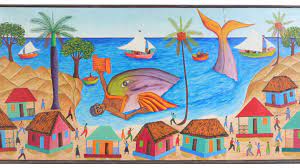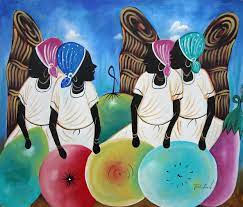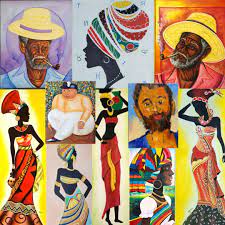
Home Page: Neocities.
Haitian art is a vibrant tapestry that weaves together a rich cultural heritage, history, and resilience. It's a fusion of African, Indigenous, and European influences that embodies the spirit and struggles of the Haitian people. One of the most renowned forms of Haitian art is "naïve" or "primitive" art, characterized by bold colors, intricate patterns, and depictions of daily life, folklore, and voodoo spirituality. Artists like Hector Hyppolite and Philomé Obin are celebrated for their contributions to this genre, capturing the essence of Haiti's soul through their paintings. The art of Haiti is deeply intertwined with its tumultuous history, reflecting both the beauty and challenges of the nation. Following Haiti's independence in 1804, art became a means of preserving cultural identity and expressing defiance against oppression. The use of recycled materials, such as metal sculptures crafted from discarded oil drums, became symbolic of the Haitian people's resourcefulness and creativity in the face of adversity. These sculptures, often depicting religious or mythological themes, showcase the resilience and ingenuity of Haitian artists. Moreover, Haitian art is not limited to paintings and sculptures; it extends to vibrant and rhythmic forms like music, dance, and elaborate Vodou ceremonies. The intricate beadwork, expressive dance movements, and rhythmic drumming of Haitian cultural expressions captivate audiences worldwide, offering a glimpse into the country's soul and its people's unwavering spirit. The art of Haiti serves as a powerful testament to the resilience, creativity, and cultural richness of this remarkable nation. bold and italic text.
Some of our Art:



Haitian music, deeply rooted in African rhythms, European influences, and indigenous melodies, is a captivating blend that mirrors the country's diverse cultural tapestry. Kompa, a musical genre originating from Haiti, is a lively and infectious style characterized by its pulsating beats, guitar-driven melodies, and romantic lyrics. It emerged in the 1950s and has since evolved into a widely celebrated genre both within Haiti and across the Caribbean diaspora. With its dance-inducing rhythms and heartfelt lyrics sung in Haitian Creole, Kompa serves as a reflection of the joys and sorrows, love and longing experienced by the Haitian people. Kompa's evolution has been shaped by various influences, including Dominican merengue, French ballroom dance music, and African rhythms. The genre gained popularity through the works of iconic bands like Tabou Combo and Coupe Cloue, who helped propel Kompa onto the international stage. Its infectious melodies and danceable rhythms have made it a staple in celebrations and gatherings, from local festivals in Haiti to dance clubs around the world. The distinct sounds of Kompa resonate with its listeners, inviting them to immerse themselves in its energetic beats and emotional storytelling. Beyond its entertainment value, Kompa serves as a cultural bridge, connecting the Haitian diaspora to their roots and serving as a source of unity and pride. Its melodies evoke a sense of nostalgia and cultural identity among Haitians worldwide, fostering a sense of community and belonging. Whether played at a festive gathering or in moments of introspection, Kompa's melodies and rhythms continue to weave threads of cultural heritage and unity among the Haitian people.
Listen to some Kompa